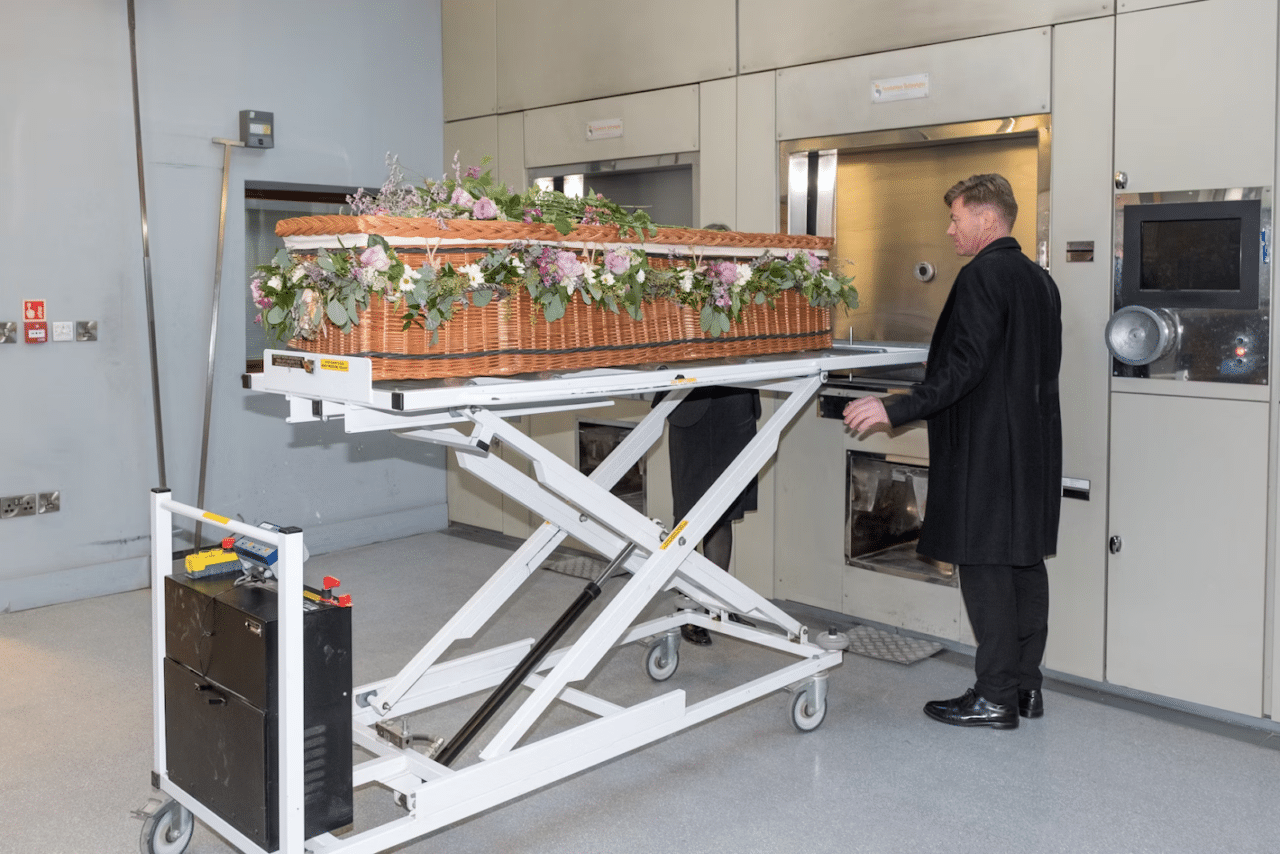How is a Body Prepared for Cremation? In-Depth Guide

Understanding Cremation Preparation: A Detailed Guide
The practice of cremation has a longstanding history spanning some 2,000 years. Today, it is a popular choice for bidding farewell to loved ones, with 59% of Americans choosing cremation in 2022. This number is only expected to increase to 65% by 2027. However, cremation as a whole can often be shrouded in mystery.To demystify this process, the Medical Education and Research Institute (MERI) offers insights into how a body is prepared for cremation, aiming to empower individuals in making informed decisions during challenging times.
How Does Cremation Work: The First Steps in Cremation Preparation
Before diving into how a body is prepared for cremation, certain paperwork and documentation is required.
Legal Documentation and Handling
The primary requisite for cremation is a signed death certificate, an official document issued by the local vital statistics office. Death certificates detail essential information about an individual’s death, including their full name, date and place of death, cause of death, demographic information, parents’ names, and marital status.
In addition to a death certificate, a cremation authorization form must be obtained and signed by an authorizing agent. Typically, if the decedent was married, the authorizing agent is the surviving spouse. If there is no spouse available, the children or next of kin can sign, following the lineage of authority. In cases with multiple legal next of kin, such as when a parent dies and it is left to several children to make arrangements, every child must sign the cremation authorization form.
Note: Some states offer a prearranged self-authorization form completed prior to death, which replaces the need for a cremation authorization form.
Once the death certificate and authorization form are filed, the county where the cremation is planned issues a cremation permit, granting permission for the cremation to proceed.
It’s important to keep in mind that laws and regulations governing cremation vary by state and by county. Additionally, there are associated costs with obtaining required documents. For example, the cost of a cremation permit (often included in the overall cremation fee) and the death certificate may fluctuate. Please check local laws for exact requirements.
Respectful Transportation to the Cremation Facility
Following the passing of a loved one, one of the most logistically and emotionally challenging aspects is arranging the transportation of their body.
The logistics of body transportation vary based on where your loved one passed away. In many states, official paperwork demonstrating authorization to make decisions about the body’s disposition is required. This authorization may stem from specific instructions left by the deceased or your status as the next of kin. Moreover, if you are considering transporting the body across countries, it’s crucial to familiarize yourself with the distinct requirements associated with international transportation.
Choosing a Funeral Home
While many states do not mandate the use of a funeral home for funeral and cremation planning, a funeral home functions as a comprehensive service provider, streamlining all aspects of funeral, burial, and cremation. Amidst the challenges during this difficult time, families frequently find comfort in the services offered by a funeral home as opposed to a standalone crematorium, which primarily focuses on the cremation process and may lack the diverse range of services provided by a home.
Death in a Hospital
In cases of death in a hospital, time is crucial, as most hospitals will not retain the body in their morgue for more than 72 hours. Coordinate with your funeral home promptly. If circumstances require an extension beyond 72 hours, some hospital morgues may make allowances for an additional fee.
Death at Home
If your loved one passes away at home, you have five days to register the death. Contact a medical professional, often the person’s primary care doctor, or reach out to a local hospital, health department, or coroner. Funeral home staff can assist in this process in many states.
Transporting Options
When considering using a funeral home in another state, be aware of laws regarding body preparation and handling when crossing state lines. Requirements, including embalming, vary by state. Funeral directors are valuable resources in navigating these complexities.
For those considering transporting a body across state lines, awareness of state laws regarding body preparation is crucial. Transportation options, whether by ground (car or train) or air, present varying costs, with funeral homes charging a “ship-out” fee for collection and preparation.
The Role of Funeral Professionals in Cremation
Funeral professionals, including staff and directors, play a crucial role in guiding families through decision-making, arranging transportation, coordinating services, and ensuring a smooth and respectful farewell.
How A Body Is Physically Prepared For Cremation
Once the body arrives at the funeral home, funeral directors follow identification procedures to ensure that the correct individual is being cremated. This typically involves checking paperwork, such as the death certificate, and attaching an identification tag to the deceased.
Once verified, funeral directors make physical preparations. How a body is prepared for cremation involves carefully cleaning the body to remove any soil, fluids, or external contaminants. The body is then dressed in appropriate clothing, which is typically provided by the family.
Embalming considerations are also part of the process, though not always mandatory before cremation. The decision hinges on factors like local regulations, the duration between death and cremation, and the body’s condition. Embalming involves injecting preservative fluids to slow down natural decomposition, and if performed, cosmetics may be applied to restore a natural appearance. Families opting for embalming may choose this route to allow for an extended period between death and the cremation ceremony, facilitating visitations or viewings.
Managing Personal Belongings
As part of their responsibilities, funeral professionals also address the handling of personal belongings. Items such as jewelry, watches, and personal effects are removed from the body. Additionally, medical devices, such as pacemakers or other implantable devices, must be removed before cremation. Pacemakers, in particular, are a safety concern due to their explosive potential in high-temperature environments.
Technical Aspects of the Cremation Chamber

A Cremation Chamber, also known as a cremator or retort, is a specialized furnace designed for the purpose of cremating human remains. The chamber is constructed to withstand high temperatures and is equipped with various features, including precise temperature controls, combustion aids, and advanced emission control systems.
Chamber Preparation and Operation
Before a cremation takes place, the chamber is preheated to the desired operating temperature. Once the chamber is preheated, the body, enclosed in a combustible container or casket, is carefully placed inside the chamber. The chamber is sealed to contain the heat during the process.
Cremation Chambers operate within a temperature range of 1,400 to 1,800° Fahrenheit, carefully controlled to ensure thorough combustion. The process involves a primary combustion phase where the body is exposed to direct heat, leading to the incineration of soft tissues over several hours. Subsequently, the remaining bone fragments undergo a secondary combustion phase, further reducing them to finer particles.
Following this step, the chamber undergoes a cooling phase before the particles are removed. The collected remains may be processed further using a machine called a cremulator. This device grinds the bone fragments into a finer powder, resulting in what is commonly known as cremains or ashes.
After the Cremation: Handling the Remains
After the cremation process is completed, cremated remains are handled with sensitivity and care.
Processing and Returning Cremated Remains
Generally, processed remains are placed in an urn. Families may choose from a variety of urns made from different materials, such as wood, metal, ceramic, or biodegradable options.
In addition to urns, other methods for receiving cremated remains include memorial jewelry such as pendants or bracelets, or keepsake containers designed to hold a small portion of the cremated remains.
Memorializing the Deceased
Upon receiving the cremated remains, families have several options to honor and cherish the departed. They can choose traditional memorial services or celebrations of life to pay meaningful tributes and remember the deceased. Another option is to conduct scattering ceremonies at a location significant to the family and the departed. Families may also opt to create lasting memorials, such as engraved plaques or memorial benches. Additionally, incorporating specific ceremonies or rituals based on cultural or religious traditions offers a meaningful way to celebrate and remember the life of the departed.
Considering Alternatives: Whole Body Donation
In lieu of cremation, whole body donation stands as a compelling alternative.
Understanding Whole Body Donation
Whole body donation offers a unique opportunity to contribute to medical science and education. Choosing to donate one’s body for scientific research transcends the conventional funeral practices, providing an invaluable gift that aids medical professionals, researchers, and educators in advancing knowledge and medical training.
This altruistic act allows individuals to leave a lasting legacy, fostering advancements in medical treatments, surgical techniques, and anatomical education. Whole body donation reflects a selfless commitment to the betterment of healthcare and education, making a significant and enduring impact on the well-being of future generations.
The Donation Process
The process typically involves several steps:
- Pre-Registration: Individuals interested in donating their bodies to science can often pre-register with a medical institution or a body donation program. Some programs may have specific eligibility criteria, so it’s essential to review and understand these requirements beforehand.
- Documentation and Legal Requirements: Pre-registration usually involves completing relevant documentation, including consent forms and medical history.
- Communication with Loved Ones: Communicating the decision to donate one’s body to science with family members or close friends is a personal but recommended step. Ensuring that loved ones are aware of and supportive of this decision helps prevent misunderstandings and ensures a smooth process after death.
- Notification at the Time of Death: When the donor passes away, it is essential for the family or designated representative to promptly notify the chosen medical institution or body donation program. Contact information and procedures for notification are typically provided during the pre-registration process.
- Transfer to the Medical Institution: Once notified, the medical institution or body donation program will arrange for the transportation of the deceased to their facility. In some cases, the cost of transportation may be covered by the program.
- Post-Mortem Examination and Acceptance: Upon arrival at the medical institution, the body undergoes a post-mortem examination to ensure it meets the program’s eligibility criteria. If accepted, the body becomes part of the institution’s body donation program.
Note: This process may vary between different body donation programs and medical institutions. Individuals interested in whole body donation should contact their chosen program directly for detailed information about the specific steps and requirements involved.
Post-Donation Considerations
After the conclusion of the full body donation period, the donor’s remains are either cremated or buried. Some programs may offer the option to return cremated remains to the family for their preferred memorialization method. Families may hold memorial services to honor the deceased, and some programs organize communal services for all donors. Institutions may express gratitude for donors through memorial events, while unclaimed remains are handled according to program procedures. Additionally, some programs maintain communication with donor families, providing updates on medical research and training, offering a sense of closure and acknowledging the donor’s impact on medical science and education.
Becoming a Whole Body Donor
While cremation is a popular post-mortem choice, you may want to consider whole body donation as an alternative. Whole body donation offers a selfless commitment to advancing knowledge and medical training, leaving a lasting legacy beyond traditional funeral practices.
Interested in becoming a whole body donor? Complete our pre-registration process here.
